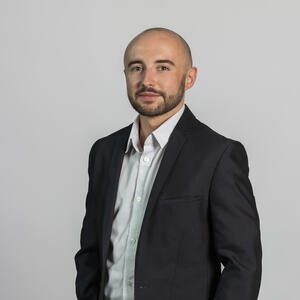Welcome to Imperial College Business School and welcome to South Kensington – the cultural and intellectual hub of London. The origins of South Kensington as a centre for learning and culture date back to the Great Exhibition of 1851 which took place in nearby Hyde Park – the legacy of which has been commemorated in the naming of Exhibition Road. Wishing to bring education and culture to the masses, Queen Victoria’s husband Prince Albert set out his vision of South Kensington as a cultural Mecca filled with museums and institutions promoting art, music, science, culture and history. The area coined the name ‘Albertopolis’ in the 1850’s and while Albert died in 1861 before his vision was fully realised, the Albert Memorial in Kensington Gardens now watches over the area.
Home to the Natural History Museum, Victoria & Albert Museum, Science Museum, Royal Albert Hall, and of course Imperial College London, the area remains a hive of cultural and intellectual activity over 150 years after its first conception.
Attractions:
Natural History Museum
Arguably the most famous and recognisable of the museums, the Natural History Museum draws around 5 million visitors per year. The famous Diplodocus ‘Dippy’ who was resident of the central entrance hall for almost 40 years has recently gone on tour around UK museums and has been replaced by a giant 25 metre long Blue Whale skeleton. Split into zones covering Earth, Volcanoes, Mammals, Dinosaurs, Birds, Human Biology, Minerals and Ecology to name but a few – it’s impossible to see everything in one visit but as entry is free you can keep coming back time and time again without spending a penny (unless you get enticed into one of the gift shops). Be sure to visit at Christmas when the famous Natural History Museum Ice Rink opens for some festive fun!
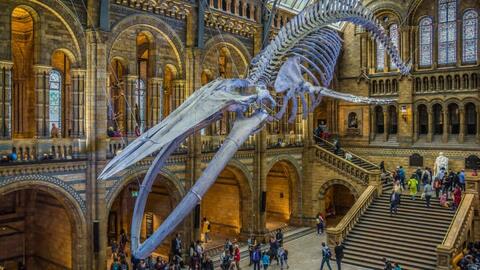
Science Museum
Our next door neighbours have been a resident of Exhibition Road since 1857 and operated as ‘The Science Museum’ since 1909. The ever-expanding collection contains steam engines from the Industrial Revolution, satellites from the Space Age and everything in between. They hold themed late night events the last Wednesday of every month – past events have included silent discos, hula hoop workshops, and talks on topics from freak shows to the last Tsars of Russia. Entry to the museum is free but exhibitions and other events may charge.
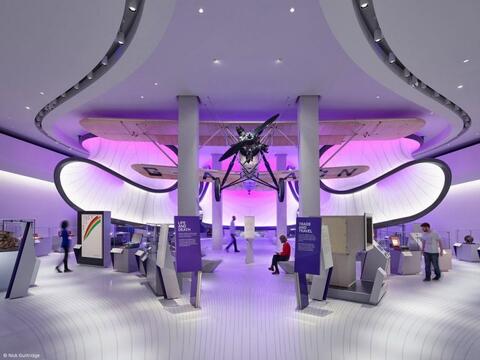
V&A Museum
Named after Queen Victoria and Prince Albert, the V&A museum is the largest museum of design and decorative arts in the world! Formerly known as the South Kensington Museum, it was renamed the V&A museum in 1899 – Queen Victoria’s last public appearance. If you look at the exterior of the building on Exhibition Road, you can see the bomb damage from the Blitz of World War II, left as an enduring reminder of the values of the museum in a time of conflict. Today the collection is split into four departments; 1. Asia, 2. Furniture, Textiles and Fashion, 3. Sculpture, Metalwork, Ceramics & Glass, 4. Word & Image. It holds the work of some of the world’s leading fashion designers including Coco Chanel, Cristobal Balenciaga, Yves Saint Laurent and Valentino Garavani. Entry is free but exhibitions and events may charge.
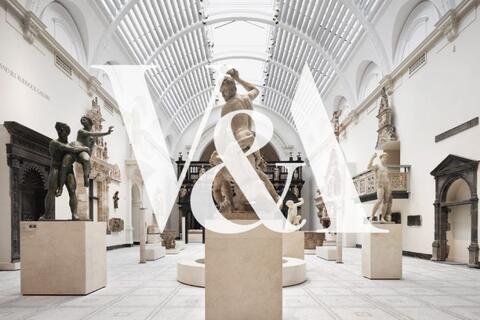
Kensington Palace
The official residence of the Duke and Duchess of Cambridge (William and Kate) and the Duke and Duchess of Sussex (Harry and Meghan), Kensington Palace was built in 1605 and has played host to a number of British monarchs over the years. It was the birthplace of Queen Victoria and she was the first person to open the palace to the public in 1898. Today, you can explore state apartments of Queen Mary II from the 1690’s and of King George II from the 1700’s as well as exhibitions on Queen Victoria and Princess Diana. Kensington Palace gardens are also open to the public and entry is free – the Sunken Garden is definitely worth a visit. Take a picnic and sit by the round pond – but be careful the swans don’t take off with your lunch!
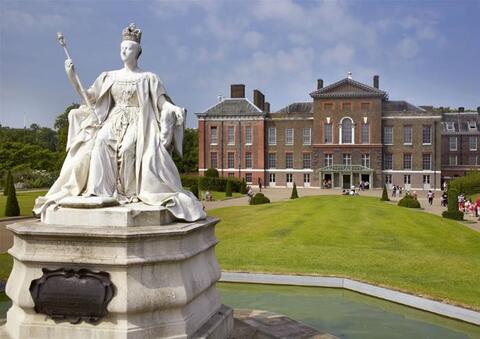
Royal Albert Hall
Officially opened to the public in March 1871 by HRH The Prince of Wales on behalf of his mother, HM Queen Victoria, who was in attendance but too upset to speak as the hall was named after her late husband Prince Albert who had died 10 years earlier. The stage at the Royal Albert Hall has been graced by some of the most famous artists in the world including The Beatles, The Rolling Stones, Frank Sinatra, Elton John, Tony Bennett and Lady Gaga. The hall hosts the annual BBC Proms, a series of orchestral classical music concerts that take place across 8 weeks of the summer. Tours of the music hall are available.
Eating and Drinking:
Bumpkin
Located on Old Brompton Road, Bumpkin is a modern British ‘gastropub’, serving British classics such as Fish and Chips and Sausage & Mash, as well as modern dishes such as Curried Ox Cheek and Candied Beets Salad. The food is really high quality and uses fresh seasonal British produce. They have a set menu Monday-Friday until 4pm where you can get 2 courses for £15.95 or 3 courses for £21.95. Fun fact – Bumpkin was featured in an episode of British reality show Made in Chelsea.
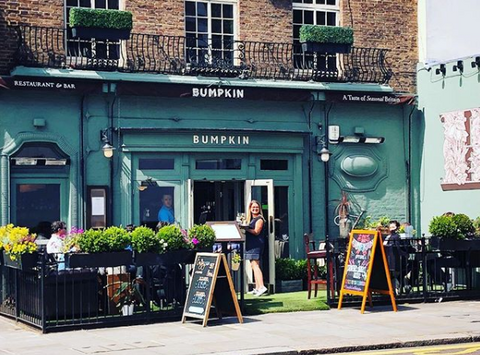
Stein’s Berlin
Recently opened, Stein’s Berlin Bar and Restaurant sits directly opposite Imperial College Business School on Princes Gate and is bringing a taste of Germany to South Kensington. The interior is what I would describe as ‘minimal chalet chic’ – very on trend right now. Renowned for its beer – Stein’s offers a wide range of German beers available in huge steins, from classic Paulaner Lager of Munich to modern Heidi Blonde craft beer produced in Elephant & Castle. Perhaps Schnapps and cocktails are more your bag? The Applestrudel Martini is delicious! They also have a great food menu to soak up all of that alcohol – it’s very traditional (and delicious) German fayre and the meter long sausage platter is not to be missed! Prost!

Eastside
A firm favourite amongst staff and students alike – Eastside is located in Prince’s gardens on the ground floor of Linstead Hall. Serving pints of beer for around £3.60 – very competitively priced for London – this is the go-to spot on campus for cheap and cheerful food and drinks. The pizzas are HUGE and will only set you back around £8. Eastside is the perfect venue for you to grab a quick lunch between lectures or meet up with friends in the evenings. It gets busy on a Friday afternoon as Imperial staff and students pop over for a post-work drink – you may even see us there from time to time.
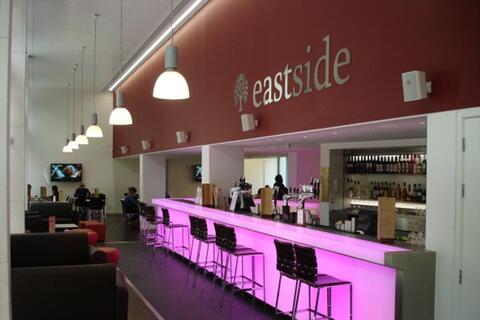
Lido Café and Bar
The Lido Café and Bar located on the banks of The Serpentine in Hyde Park is the perfect spot for those #summervibes Instagram posts. On a sunny day you can sit outside and watch the swimmers brave the cold waters in the Lido and people-watch for hours. It might not have quite the same atmosphere in winter, but the food is really good!
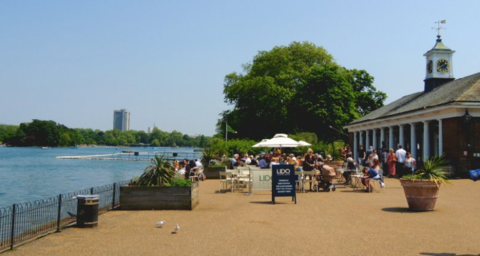
South Kensington Farmers Market
Held on campus every Tuesday on the Queen’s Lawn, the South Kensington Farmers Market is a great place to grab some delicious street food at lunchtime. There’s a wide range of cuisines from all over the world and plenty of vegetarian and vegan options, all using fresh local and seasonal produce. You can also pick up fresh fruit and vegetables, jams and chutneys! Some stalls do accept card payments – the market runs from 09:00-14:00.
Discover South Kensington
To keep up to date on the latest goings on you can visit the Discover South Kensington website and sign up to their newsletter.
South Kensington is a great place to work and study and I hope you enjoy getting to know the area. Make the most of your time here at Imperial College Business School –and good luck with your programme and future careers!

